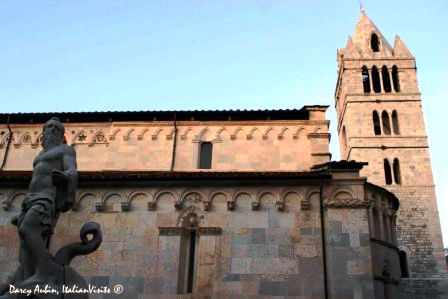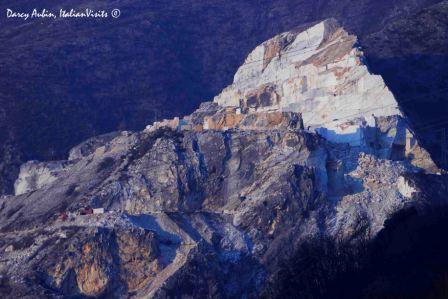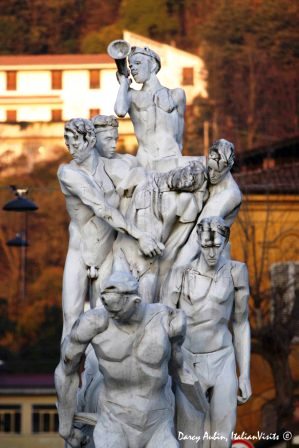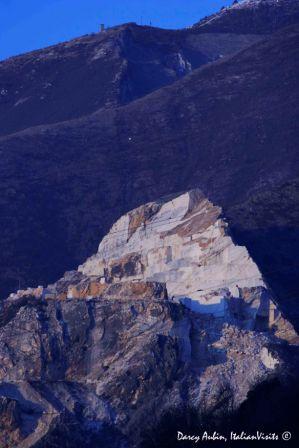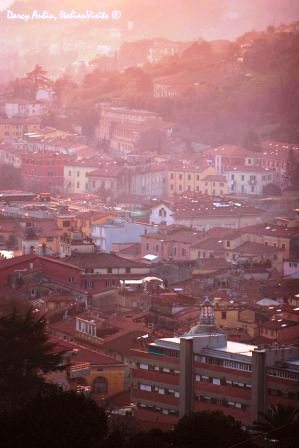The province of Massa and
Carrara is an incredibly
fascinating geographical area.
As is noticeable in several of
the photographs, it looks as
though the mountains near
Massa and Carrara are all
covered with snow, but in
reality, the white that you
see is in fact some of the
whitest and most pristine
marble in the world.
The city of Carrara in
this Norh Western corner of
Tuscany, has managed to
conserve more evidence of its
medieval history than its more
modern sister town "Massa"
has over the centuries, which
is more modern on a whole than
is Carrara who has a much
larger historical centre.
Taking a walk through the town
centre of Carrara or visiting
the marble caves deep in the
mountains behind the town is
fascinating. To walk in
the same valleys as
Michelangelo did as he
searched for the perfect
marble needed in order make
possible the marvellous
creations is nothing short of
inspiring.
In Carrara, everything that can be built of marble is, and why not? The mountains just behind the city of Carrara have produced some of the finest pieces of marble the world has ever seen.
Quite literally, just stepping
out of your door in Carrara
will have you walking on this
precious stone, for the
cobblestones in Carrara are
quite literally made out of
Marble. It was cheaper for the
town to use what was readily
available to them, rather than
ship other types of rock in.
Some guide books that we have
perused say that visiting
North Western Tuscany may not
be worth your time unless you
are a "marble worshipper", but
visiting Massa, Carrara and
Pietrasanta, give a very
interesting and important
perspective on Tuscany, that
we believe many people may
find interesting and
inspirationa.
Via Santa Maria, which branches from the spacious piazza where the
Academy of Beautiful Arts is
located, is a great example of
the city's success in
maintaining its original
Medieval structure.
Carrara's cathedral is very
unique in that it consists of
a combination of many
different styles of
architecture as well as
marble.
It was started in the 11th
century and finished in the
14th. It has a fašade which
shows clear evidence of two
different phases of
construction: there's a part
with a solid Romanesque base
and one part that's very
light, with fine thin columns
and Gothic style arches.
The art of stone masonry has
long been a traditional trade
of this Tuscan province.
Carrara in
particular is famous all over
the world for its white marble
which is derived from the many
marble caves in the area.
The trade generated through
the commercial activity
involving the marble has
always been a source of great
income to the city.
Visiting the coastal region in
addition to the towns of
Pietrasanta, Massa and Carrara
make for a fascinating day in
Northwest Tuscany.

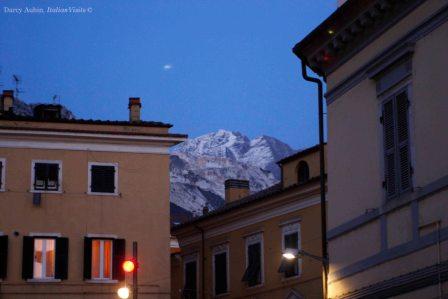
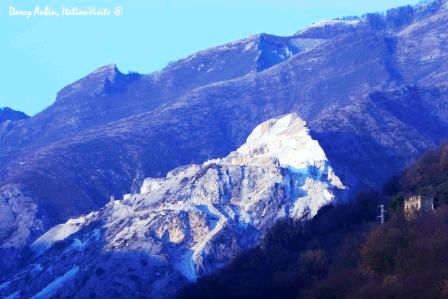
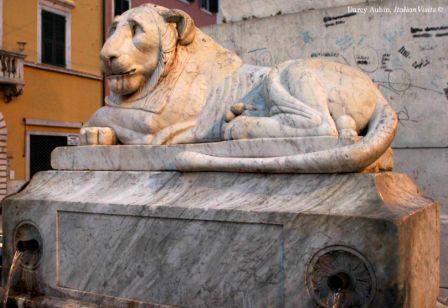
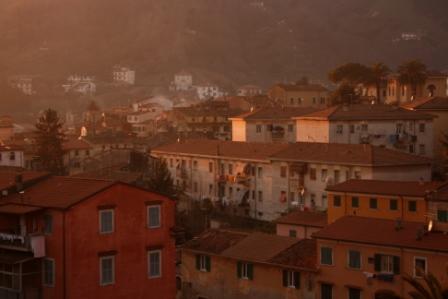
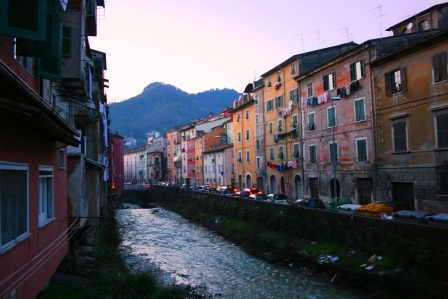
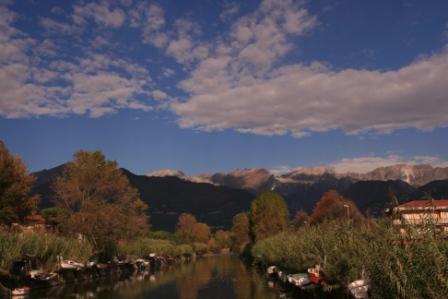 s
s 